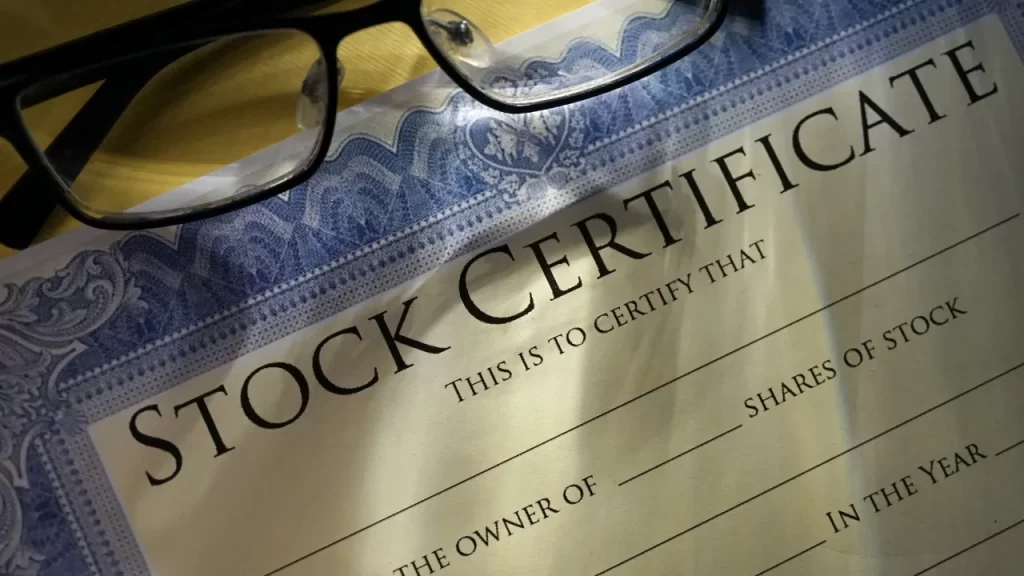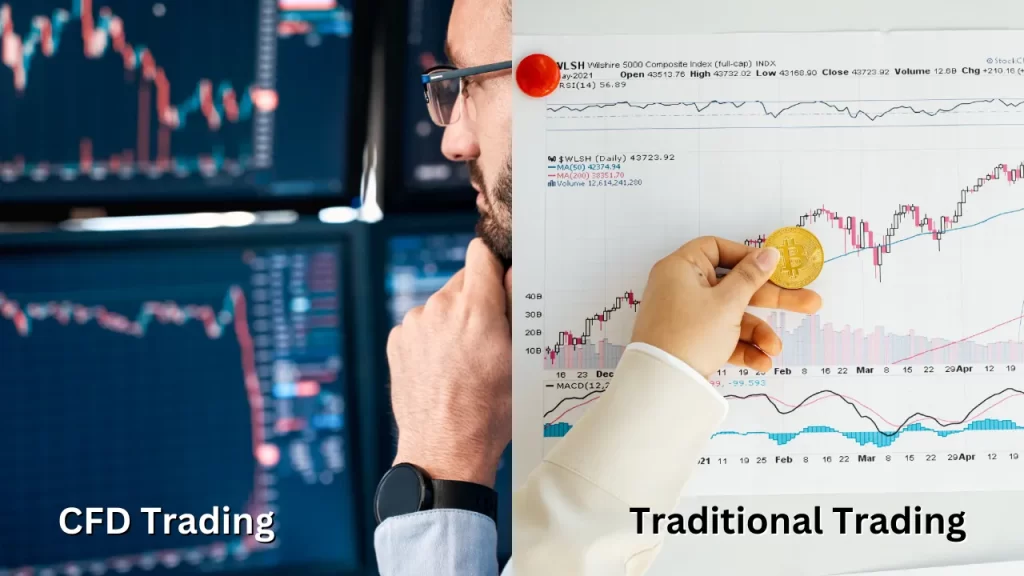Trading financial instruments can be complex, and choosing the right method is crucial for success. CFD trading (Contracts for Difference) and traditional trading (buying and selling assets like stocks or commodities) each have unique advantages and challenges.
This guide breaks down the fundamental differences between these two trading methods, examining aspects such as ownership, leverage, costs, and risk.
What is CFD Trading?
CFD Trading is a form of derivative trading where you speculate on the price movement of an asset without owning the underlying asset. Here are the key features:
- No Ownership: You never own the actual asset; you simply enter into a contract with a broker to exchange the difference in the asset’s price.
- Leverage: CFDs are typically traded on margin, allowing you to control larger positions with a relatively small amount of capital.
- Flexibility: With CFDs, you can profit from both rising (going long) and falling (going short) markets.
- Cost Structure: Trading costs mainly come in the form of spreads, commissions, and overnight fees if positions are held for extended periods.
CFD trading offers a flexible way to access multiple markets, but it also comes with the inherent risks associated with leveraged positions.

What is Traditional Trading?
Traditional Trading involves the direct buying and selling of financial instruments such as stocks, bonds, commodities, or currencies.
Key characteristics include:
- Asset Ownership: When you engage in traditional trading, you own the underlying asset. For example, buying shares of a company means you become a shareholder.
- No Leverage (or Limited Leverage): Most traditional trades are executed without leverage, meaning you pay the full price of the asset.
- Long-Term Investment: Traditional trading is often used for long-term investments, where the focus is on asset appreciation, dividends, or interest over time.
- Cost Structure: Costs generally include brokerage commissions, transaction fees, and sometimes custodial fees, depending on the asset class.
Traditional trading is straightforward and is favored by those looking to build and hold assets over time, though it might limit opportunities to profit from short-term market movements.

Key Differences Between CFD Trading and Traditional Trading
1. Ownership of Assets
- CFD Trading: You never own the underlying asset. Trades are purely speculative, based on price differences.
- Traditional Trading: You own the asset, such as shares in a company or physical commodities. Ownership can confer additional benefits, such as dividends or voting rights.
2. Leverage and Margin
- CFD Trading: Leverage allows you to control large positions with a small capital outlay. While leverage can amplify gains, it also magnifies potential losses.
- Traditional Trading: Typically, you pay the full amount for the asset, although margin accounts are available for certain asset classes. Lower risk of amplified losses since leverage is usually less prevalent.
3. Trading Flexibility
- CFD Trading: Enables both long and short positions, allowing you to profit in any market condition. Offers access to a wide range of global markets through a single trading platform.
- Traditional Trading: Primarily focuses on buying low and selling high. Selling short in traditional markets is possible but often more complex and subject to additional regulations.
4. Cost Structure
- CFD Trading: Costs include spreads, commissions, and overnight fees. The impact of these costs can be significant, especially in highly leveraged positions.
- Traditional Trading: Involves brokerage commissions, transaction fees, and possibly custodial fees. Often viewed as more straightforward with fewer hidden costs.
5. Risk and Regulation
- CFD Trading: Higher risk due to leverage and market volatility. Regulation varies by country, and not all CFD brokers are regulated to the same standard.
- Traditional Trading: Generally perceived as lower risk since you’re not trading on margin as frequently. Typically subject to stricter regulatory oversight and investor protections.

Pros and Cons
Pros of CFD Trading
- Leverage: Allows you to control larger positions with less capital.
- Market Flexibility: Profit from both rising and falling markets.
- Diverse Market Access: Trade a wide range of assets on one platform.
Cons of CFD Trading
- Higher Risk: Leverage can magnify losses.
- Cost Complexity: Spreads, commissions, and overnight fees can add up.
- No Ownership Benefits: You miss out on dividends, voting rights, or other benefits of owning the asset.
Pros of Traditional Trading
- Asset Ownership: You benefit from asset appreciation, dividends, and other ownership perks.
- Lower Leverage Risk: Reduced potential for significant losses due to lower or no leverage.
- Regulatory Oversight: Often subject to more rigorous regulatory protections.
Cons of Traditional Trading
- Capital Intensive: Requires more capital to purchase full assets.
- Limited Flexibility: Primarily benefits from upward market movements.
- Potentially Slower Gains: May not be as responsive to short-term market fluctuations.
Conclusion
Both CFD trading and traditional trading have their unique benefits and risks. CFD trading is ideal for those who want to leverage small amounts of capital for potentially higher returns and capitalize on market volatility.
In contrast, traditional trading is well-suited for investors who prefer owning assets, benefiting from long-term growth, and avoiding the complexities of leverage.
Choosing between the two ultimately depends on your investment strategy, risk tolerance, and financial goals.
Whether you opt for the flexibility of CFD trading or the stability of traditional trading, understanding these differences is key to making an informed decision.






